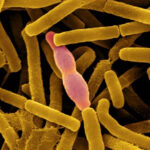The

Advantage

Safe
- No need to handle toxic or corrosive chemicals or by-products
- Microbiologically free water without the use of potentially dangerous chemicals
- UV imparts no change in taste, odor, pH or conductivity
- No trihalomethanes (THM’s) formation
Simple
- Fast and simple installation with three connections (two water and one electrical).
- Maintenance involves annual lamp replacement (provided water quality parameters are met) with no need to turn off water flow.
- Automatic, unattended and user friendly operation.
Efficient
- Compact units with 304 or 316 (upon request) stainless steel reactor chamber, polished for laboratory and medical use, require minimum space.
- Microorganisms are inactivated within seconds; eliminates the need for long retention times or retention tanks.
- Very low power consumption; less than 40-watt bulb to effectively treat from 1 to 100 gallons per minute.
- High output low pressure mercury vapor lamps with high isolation pin.
- Little change in water temperature even after prolonged periods of no water flow
- Open end high quality quartz sleeve and stainless steel gland units.
Economical
- No moving parts to wear out or break.
- Lower capital investment when compared to chlorine or ozone systems.

Eliminating microorganisms in your water*



These microorganisms may/may not exist in your household water. It is important that you have your water tested to identify microorganisms and/or contaminants, if any.
Water Quality
Water quality plays a major role in the transmission of germicidal ultraviolet rays. It is recommended that the water does not exceed the following maximum concentration levels.
Maximum Concentration Levels
| Iron | < 0.3 ppm (0.3 mg/L) |
| Hardness | < 7 ppm (120 mg/L) |
| Turbidity | < 1 NTU |
| Manganese | < 0.05 ppm (0.05 mg/L) |
| Tannins | < 0.1 ppm (0.1 mg/L) |
| UV Transmittance | > 75% |
Effectively treating water with higher concentration levels than listed above can be accomplished, but may require added measures to improve water quality to treatable levels.
UV Dose
The units generate a UV dosage of at least 30,000 microwatt-seconds per square centimeter (µW-s/cm2), even at the end-of-lamp life (EOL), which is more than sufficient to destroy most waterborne microorganisms, such as bacteria, yeasts, algae, etc.
